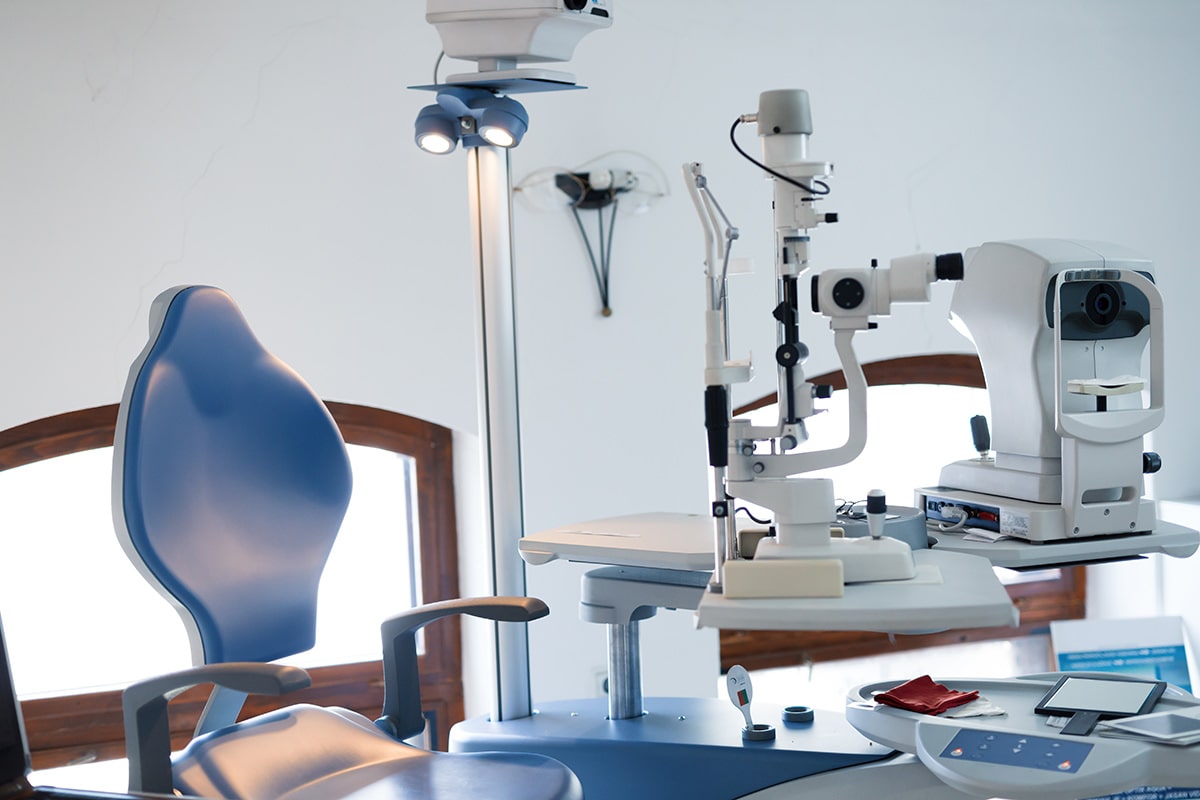In his eye residency he specialized doing all various types of training including cataract, glaucoma, corneal transplantation. and manamagement of uveitis. the interest that sparked his interest most initially was the old style of correcting ones vision for astigmatism with Radial Keratometry for myopia & arcuate keratometry for astigmatism. With RK cuts outside of the centre 3.0 optical zone are done paracentrally outside the central optical zone and extend deeply into the thickness of the cornea and extended to the periphery in a bicycle spoke position originating from the central optical zones. The deep radial cuts cause a FLATTENING OF THE CORNEA creating one to focus on the macular area of the retina where one processess the clarity of light. With the rays of light falling on the central macula one obtains clear vision for distance.
Most of our Philadelphia PA patients had not underrfgone RK as it was not as popular as laser vision correction as for the patients of Philadelpha PA. Most Philadelphia PA prefer to have Rk to the cornea as it a superficial surface treatment not penetrating inner cornea and thus a globe perforation which is a major complication for our Philadelphia PA patients where some of the patients may lose vision and have post operative intraocular such as infection, hyphema with secondary glaucoma, retinal tears, and choroidal effusions which may need intraocular surgery for our Philadelphia PA patients to fix proplems aswell injections of medicines to control infection & Inflammation.
ALL these Risks are ARE Majority close to zero percent for our Philadelphia PA patients from happening due to the cut and ablation usually incolving the upper part of the corneal thickness with the residual stromal base strong and maintain the stiffness & rigidity of the cornea of the Philadelphia PA patient for post-operative stability creating stable permanent contour thus maintain constant clear vision for most. This is unlike RK patients who have corneal instability from the deep cuts and a certain progress unlike lasik to hyperopia wher the blur reoccurs for distance and need glasses.
To fix this RK cannot be done as it will make condition worsen. The only option is glasses or contacts or laser vision correction. Lasik use d mainly to make a horizontal cut with the flap having a pizza pir appearance with the pie cuts held together by scar. Sometimes scar may break and the unified parts come apart from the weak scar breaking and breaking the flap into sections and is usually damaged where the flap has to be prepared. Drr Columbus the no cut PRK as proceduere of choice as nocut is used to disrupt the scar holding the pieces of the corneal flap intact.
With RK the epithelium skin layer is exposed to the top of the stromal where the cuts are integrity and maintain the pizza cuts to be stable and impossiblto break apart unlike a LASIK cut. This mens there is a high success for his Philadelphia PA patients to have a successful outcome seeing well with an intact cornea that heals well and strong with the laser reshping eliminating the blur for distance anrefind their newly refound they had just after their first RK procedure
With the Advent of LASIK it has virtually eliminated RK and AK procedures in the past. With the evolution of laser vision correction, Our Surgeon has vast traing on ALL laser technologies that came out in 1996 with the onset of broad beam lasers with the summit apex plu which had downfalls compared to knewr technology with less achieving 20/20, more second treaments need, and a higher percentage of glare halos.
Dr Columbus evolved to newr technology with scanning slit with the Nidek EC-5000 laser which provides smoother treaments allowing for more crisper vision with many obtaing 20/20 with less glare compared to older broad bema technology. The newest and latest Dr. Columbus uses the flying spot allegretto wavelight laser with its unique peripheral ablation significantly reducing the chance of glare and at the samed time improves ones quality of vision. The treaments are super faster than other technologies by more than 50% resulting in 20.15 vision where patients describe this vision to be sharpe than their glasses, the best they ever seen vs glasses and often describe their new vision as “High Definition!” Dr. Columbus is always evolving to provide the latest technologies to get best outcomes for his practice for the communities of Philadelphia PA






